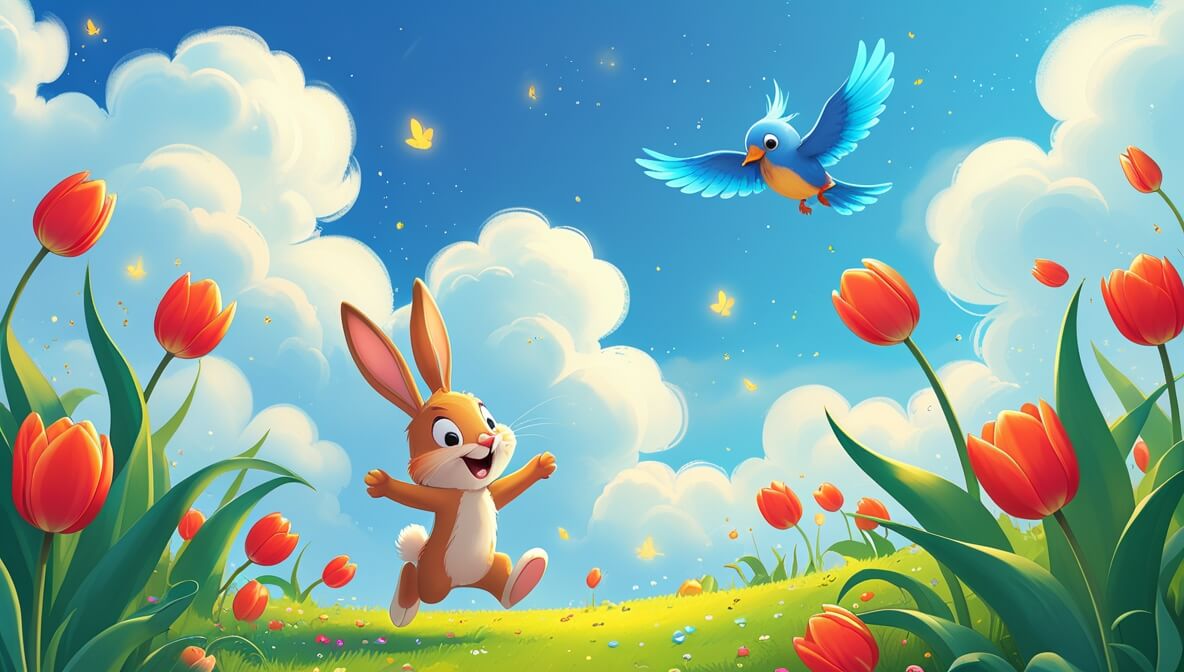In a garden filled with magic, two curious animals discover the power of friendship and helping each other.
Age Recommendation
0 – 4 years
Characters
Characters:
- Basil (a playful bunny with long ears)
- Flick (a tiny bird with bright blue feathers)
Story
In the middle of a sunny garden, Basil the bunny was hopping around, exploring the colorful flowers. He loved to sniff the tulips and bounce over the daisies. One day, as he was enjoying the sunshine, he heard a soft tweet. It was Flick the bird, who was trying to reach a delicious berry perched high on a branch.
The Berry Adventure
Basil wanted to help his new friend. “Don’t worry, Flick! I’ll help you,” he said. With a big hop, he leaped up and nudged the branch gently. The berry fell, and Flick caught it joyfully. “Thank you, Basil,” chirped Flick, happy and grateful.
A New Friendship
From that day on, Basil and Flick became the best of friends. They played together every day, discovering new parts of the garden. Basil taught Flick how to hop, while Flick showed Basil how to sing beautiful songs. They realized that with a little bit of teamwork, they could achieve anything.
The end.
Moral of the Story
Helping others and working together can make you happy and create wonderful friendships.
Questions to Think About
- What do you think made Basil want to help Flick?
- How do you feel when someone helps you?
- Can you think of a time you helped a friend?
- What do you think Basil and Flick will do next in the garden?
- Why is it important to have friends?
Do You Know
- Bunnies can hop up to three feet high!
- Birds have different songs to communicate with each other.
Word Explorer
- Hop: To jump lightly and quickly.
- Tweet: The sound a bird makes.
- Berry: A small, juicy fruit.
Emotions in the Story
- Excitement: Felt by Basil when he was exploring the garden.
- Happiness: Felt by Flick when he caught the berry.
- Friendship: Grown between Basil and Flick as they played together.
Color Your Scene
Imagine the garden with bright red tulips and a sky full of fluffy white clouds. Draw Basil with his long ears hopping near the flowers and Flick flying above with his blue feathers shining in the sun. Use lots of colors to make your picture come to life!
Parents’ Corner
This story is a great way to talk to your child about:
Friendship: Discuss the importance of having friends and how we can help each other, just like Basil and Flick did.
Cooperation: Encourage your child to think about how working together can solve problems and make playtime more fun.
Kindness: Talk about how little acts of kindness can lead to big happiness and strong friendships.
Nature exploration: Inspire your child to look around your garden or park and appreciate the beauty of nature, just as Basil and Flick did.











